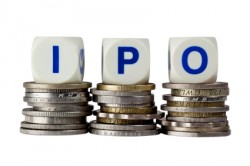
Spotlight on: IPOs
Any investor who has spent some time in the market will know the first day that a stock is listed can be a very interesting event. IPO days are known for big up moves and it’s almost surprising to see an IPO flop. To take a few examples, JB Hi Fi rallied 45 per cent on its first day of trading, Veda rallied 40 per cent on its first day and Beacon Lighting rallied 60 per cent on its first day – all very impressive!
So why does this occur? The general line of thought is that IPO sales are done in conditions of asymmetric information, that is, the seller understands the business more so than the first day investors and hence the selling price differs vastly from the buying price.
This is especially true if expected growth rates are much higher than the firm’s economics and prospects would suggest are achievable. Evidence of this in French, Italian and German stock exchanges can be found in a study by Cogliati et al whom found that for the average IPO “the estimated growth in cash flow is much higher than its actual realization, with the median IPO firm overvalued at the offering by 74%” [1]. Of course, it would be most interesting to see an Australian study, but I would be unsurprised should similar results be found.
Perhaps there are other “IPO anomalies” that we can investigate?
In a recent May 2014 paper, Hahl et al studied the performance of value and growth stock IPO’s in the Finnish stock market. Their results showed that growth stocks were “…slightly more underpriced and have marginally higher short –run returns. Value stocks are better long-run investments and provide higher returns during the first three years in the aftermarket…” [2]
Would ownership structure possibly be a significant factor? A study by Michel et al titled “Ownership structure and performance: Evidence from the public float in IPOs” found that “…a non-linear relation exists between the public float and post-IPO returns. Specifically, as public float increases, long-run returns decrease for low levels of public float and increase for high levels of public float. This relation persists even after controlling for various firm characteristics. The best long-term performers are firms that sell either very little or sell most of their stock in the IPO. We suggest that the choice of public float level creates a trade-off between incentives to insiders and power granted to outsiders.” [3].
Note that this article is not proposed as offering a amethodology for generating big returns from the next IPO but I hope I’ve put forward some variables that may be of use in your analysis.
[1] IPO Pricing: Growth Rates Implied in Offer Prices Cogliati, Giordano M; Paleari, Stefano; Vismara, Silvio. Annals of Finance 7.1 (Feb 2011): 53-82.
[2] Value versus Growth in IPOs: New Evidence from Finland Hahl, Teemu; Vahamaa, Sami; Aijo, Janne. Research in International Business and Finance 31 (May 2014): 17-31.
[3] “Ownership structure and performance: Evidence from the public float in IPOs” Michel, Allen; Oded, Jacob; Shaked, Israel. Journal of Banking & Finance 40 (Mar 2014): 54.
This post was contributed by a representative of Montgomery Investment Management Pty Limited (AFSL No. 354564). The principal purpose of this post is to provide factual information and not provide financial product advice. Additionally, the information provided is not intended to provide any recommendation or opinion about any financial product. Any commentary and statements of opinion however may contain general advice only that is prepared without taking into account your personal objectives, financial circumstances or needs. Because of this, before acting on any of the information provided, you should always consider its appropriateness in light of your personal objectives, financial circumstances and needs and should consider seeking independent advice from a financial advisor if necessary before making any decisions. This post specifically excludes personal advice.
INVEST WITH MONTGOMERY
shawn-tarafder
:
Hi Roger
Hope you are well. Would love to hear your thought on Murray Goulburn , now that we know the final price ($2.10).
Thanks
bradley-holland-395
:
Hi Roger, What are your thoughts on the current healthscope IPO? Is it something you see value in participating with?
Roger Montgomery
:
Great business. Attractiveness however depends on final price. Looks fully valued at the top of the range…
Wayne A
:
Asymmetry of information means “It’s Probably Overpriced”. Apart from some government privatisations or occasional poor advice from investment bankers, the odds of businesses being sold for significantly less than a reasonable estimate of their real value are slim. That won’t stop people guessing that a share price will double eventually, so no harm in paying 40% above IPO price today. But in the main it is a guess.
At the time of listing, could anyone seriously know that businesses like SEK and DMP would become what they have today. Only with 20/20 hindsight.
Roger Montgomery
:
Indeed, but that is precisely why vendors sometimes sell their stock too cheap…
tony seabrook
:
hi roger
what are your thoughts on yesterdays ipo monash ivf
thanks
tony
Roger Montgomery
:
Didn’t participate. Shares off more than 20% so delighted that we stepped aside.